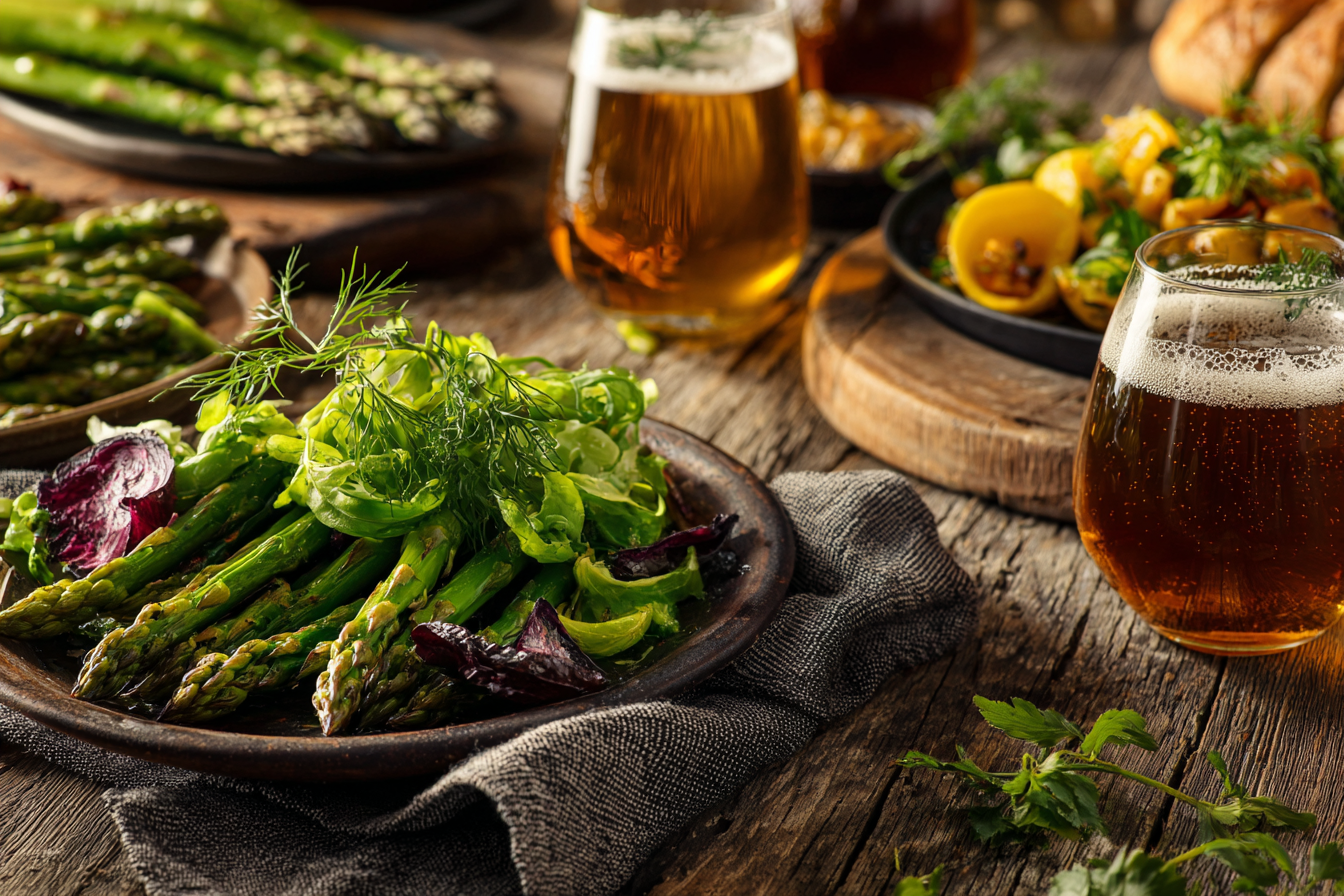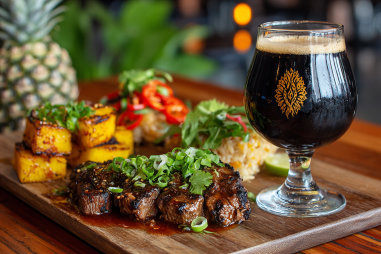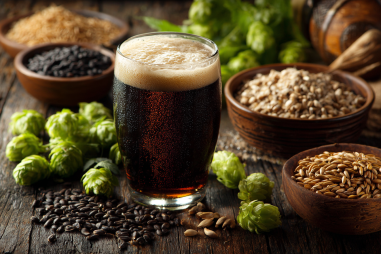Vegetable beers are carving out their own niche in the craft beer world, offering unique and vibrant flavors that stem from an unlikely ingredient: vegetables. Unlike traditional grain or hop-forward beers, vegetable beers showcase the earthy, sweet, or even savory notes of vegetables like carrots, beets, pumpkins, and more. But their versatility does not end with the beverage itself. Pairing vegetable beer with the right foods can truly unlock their potential, enhancing your meal and elevating your tasting experience. Whether you’re sampling a crisp and refreshing carrot beer or a deep, robust beet brew, understanding pairing principles can guide you in matching these brews with dishes that complement their distinct flavors.
Understanding Food Pairing Principles for Vegetable Beer
To successfully pair vegetable beer with food, it’s essential to first understand the general principles of food and beverage pairing. The main goal is balance — you want the flavor of the beer and the food to complement each other without one overpowering the other. When it comes to vegetable beer, several components play a critical role:
- Flavor intensity: Consider how bold or delicate the beer’s vegetable notes are. Lighter vegetable flavors work best with simpler foods, while stronger flavors can stand up to more complex dishes.
- Texture and body: The mouthfeel of the beer can affect pairing choices. A light, effervescent beer can refresh the palate, while a fuller-bodied vegetable beer can add richness to a meal.
- Sweetness and earthiness: Many vegetable beers have inherent sweetness or earthy qualities, which can be emphasized or contrasted by specific foods.
- Acidity and bitterness: These can help cut through fats, balance richness, and highlight certain flavors in the food.
By considering these factors, you can make thoughtful pairing decisions that highlight the best qualities of your vegetable beer and your meal.
Flavor Profiles of Common Vegetable Beers
Vegetable beers cover a broad spectrum of flavors depending on the vegetable base, brewing techniques, and additional ingredients used. Here’s a look at some popular vegetable beer profiles:
- Carrot Beer: Typically light and refreshing, carrot beer often delivers subtle sweetness and a slight earthiness. It tends to have a crisp finish with colorful carotenoid undertones.
- Beet Beer: Known for its deep ruby color and rich, earthy sweetness, beet beer often exhibits a velvety texture with hints of tartness and mineral notes.
- Pumpkin Beer: Often associated with fall, pumpkin beers are usually spiced and fuller-bodied, featuring sweet, roasted pumpkin flavors combined with warming spices such as cinnamon, nutmeg, and clove.
- Tomato Beer: Savory and slightly tangy, tomato-based beers can have a flavor profile that’s reminiscent of fresh salsa or gazpacho, sometimes with a hint of umami richness.
- Squash and Zucchini Beers: Light and subtly sweet with a mild vegetal character, these beers often serve as a refreshing backdrop for more delicate pairings.
Knowing these profiles helps you identify which foods will naturally pair well or contrast pleasingly with each type of vegetable-infused brew.
Pairing Tips for Light and Refreshing Vegetable Beers
Light vegetable beers such as carrot or squash brews are fantastic companions to dishes that highlight freshness and simplicity. These beers generally carry gentle sweet and earthy flavors that work well with lighter fare.
- Salads with fresh herbs and citrus: A crisp carrot beer pairs wonderfully with leafy green salads featuring herbs like basil, mint, or cilantro, especially when dressed with lemon or orange vinaigrette.
- Grilled seafood: The subtle sweetness of light vegetable beers complements grilled shrimp, scallops, or white fish, enhancing natural flavors without overwhelming them.
- Light Mexican dishes: Think street corn, ceviche, or fresh salsas. The refreshing quality of these beers cuts through a bit of spice and acidity gracefully.
- Simple cheeses: Soft, mild cheeses like fresh mozzarella, ricotta, or chèvre marry well with the light profiles of vegetable beers.
When serving light vegetable beers, focus on foods that maintain a bright, clean flavor profile and avoid heavily spiced or overly rich dishes that may overshadow their gentle flavors.
Matching Hearty, Earthy Vegetable Beers with Robust Dishes
Vegetable beers that deliver rich, earthy, or spiced notes—such as beet, pumpkin, or tomato beers—lend themselves beautifully to heartier meals. Pairing these brews with robust dishes creates harmonious flavor echoes and satisfying contrasts.
- Roasted root vegetables and mushrooms: These earthy side dishes mirror the deep vegetable flavors of beet or pumpkin beers, creating a delightful umami experience.
- Barbecue and smoked meats: The smoky, sweet, and tangy elements of barbecue complement the richness of pumpkin or beet beers, with the beer’s acidity helping to balance bold sauces.
- Hearty stews and chili: The full body and spice notes in these beers enhance complex and spicy stews, making for a warm and satisfying pairing.
- Strong cheeses: Aged cheddar, gouda, or blue cheese offer the intensity needed to stand up to robust vegetable beers.
Don’t shy away from layering flavors—earthy vegetable beers thrive when paired with dishes that are equally bold and satisfying.
Seasonal Vegetable Beer Pairings
Seasonality plays a significant role both in food and in vegetable beer offerings. Matching seasonal brews with appropriate dishes can elevate your experience and celebrate the best flavors of the time of year.
- Spring and early summer: Lighter vegetable beers like carrot and zucchini pair well with fresh spring vegetables, asparagus, pea shoots, and light pasta dishes featuring herbs.
- Fall: Pumpkin, squash, and beet beers perfectly accompany autumnal dishes such as roasted turkey, stuffing, caramelized root vegetables, and apple-based sides.
- Winter: Rich vegetable beers with warming spices are ideal with hearty stews, roasted meats, and winter vegetable gratins.
Tapping into seasonality not only provides optimal flavor harmony but also connects your menu to the rhythms of nature and local produce.
Vegetarian and Vegan Food Options that Complement Vegetable Beer
Vegetable beers are naturally suited for vegetarian and vegan dining, thanks to their plant-based origins and diverse flavor profiles. Here are some delicious vegetarian and vegan pairing suggestions:
- Roasted vegetable platters: Combining assorted roasted root vegetables, Brussels sprouts, and eggplant pairs well with earthy beet or pumpkin beers.
- Grain bowls: Quinoa or farro bowls with fresh veggies, nuts, and vinaigrette highlight the crispness of carrot or squash beers.
- Spiced lentil dishes: Dals or curried lentils work beautifully with fuller-bodied pumpkin beers, where the spices echo the beer’s notes.
- Vegan cheeses and charcuterie: Nut-based cheeses and plant-based meats lend an exciting complement to vegetable beer, especially when served with pickles and bread.
These combinations honor plant-forward cuisine while making the most of the unique qualities of vegetable beers.
Hosting a Vegetable Beer Tasting and Pairing Event
If you’re enthusiastic about vegetable beers, why not host a tasting event to explore their potential with friends or fellow enthusiasts? Here are some tips to create a memorable pairing experience:
- Select diverse vegetable beers: Offer a variety, such as a carrot ale, a beet stout, and a pumpkin spice brew, to showcase different flavor ranges.
- Prepare complementary bite-sized dishes: Serve small portions of paired foods, like citrus salads, roasted vegetables, artisan cheeses, and spiced nuts.
- Provide tasting notes: Share information about each beer’s ingredients, flavors, and pairing rationale to engage your guests.
- Encourage experimentation: Invite guests to try alternative pairings and share their impressions, fostering an interactive and fun environment.
- Keep palate cleansers handy: Plain crackers or slices of apple can help reset the palate between beers.
This kind of event not only celebrates vegetable beers but also educates attendees on broadening their pairing horizons.
Elevate Your Meals with Thoughtful Vegetable Beer Pairings
Vegetable beers offer exciting, unusual flavors that challenge traditional beer pairing conventions. By understanding their flavor profiles and pairing principles, you can enhance both the beer and your meal, whether through light, refreshing accompaniments or hearty, richly flavored dishes. Seasonal produce and plant-based foods provide perfect platforms for these brews to shine, making vegetable beers a wonderful addition to any culinary occasion. So next time you pour a glass of carrot ale or beet beer, consider what you’re eating alongside it — the right pairing can transform your tasting into a truly memorable experience.







